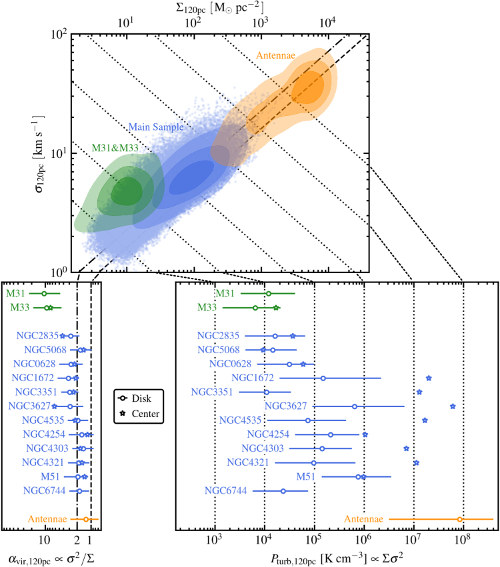| EPoS Contribution |
|
Demographics and Environment-dependence of Molecular Cloud Properties in Nearby Star-forming Galaxies
Jiayi Sun OSU, Columbus, US | |
| I will show key results from the PHANGS-ALMA survey, an ALMA large program obtaining arcsecond resolution CO imaging of ∼90 nearby, star-forming galaxies. With linear resolution (~60-120 pc) reaching the size of individual giant molecular clouds (GMCs), PHANGS-ALMA provides the most complete atlas ever of GMCs in the local star-forming galaxy population. These GMCs host most star formation, and thus this dataset allows us to study how the boundary condition of star formation changes from place to place. In the full PHANGS-ALMA sample, we do see a wide range of molecular gas surface density, velocity dispersion, and turbulent pressure on 60-120 pc scales (i.e., "cloud scales"). These properties show clear dependence on the large-scale galactic environment. We characterize the empirical correlations and explore theoretical explanations for these correlations. We find that the internal pressure in molecular gas almost always exceeds the large-scale average ISM pressure. This over-pressurization results because molecular gas self-gravity significantly alters the local gravitational potential on cloud scales. In many cases, self-gravity outweighs external gravity and ambient pressure combined. Overall, the scaling between ISM pressure and local star formation rate agree well with predictions from self- regulated star formation models. | |
 | |
| Caption: Distribution of molecular gas surface density, velocity dispersion, virial parameter, and turbulent pressure, derived on 120 pc scale in 15 nearby galaxies (this is roughly equivalent to showing the properties of ~30,000 GMCs). An updated version of this analysis will cover ~100,000 independent measurements in ~80 galaxies. We see significant and environment-dependent variations in these properties. We identify the turbulent pressure as the "principal component" of these variations. Our following work shows that the variations in the turbulent pressure can be understood by considering the ISM in a dynamical equilibrium state within the galaxy gravitational potential -- once the distribution of gas and stellar mass in a galaxy disk is known, the turbulent pressure can be well predicted by the required pressure to hold the ISM in equilibrium. | |
| Collaborators: A. Leroy, OSU, US E. Ostriker, Princeton, US A. Hughes, CNRS, FR E. Rosolowsky, Alberta, CA A. Schruba, MPIE, DE E. Schinnerer, MPIA, DE G. Blanc, U. Chile, CL C. Faesi, MPIA, DE D. Kruijssen, U. Heidelberg, DE S. Meidt, U. Gent, BE D. Utomo, OSU, US (on behalf of the PHANGS Collaboration) |
Key publication
Suggested Session: Turbulence |

